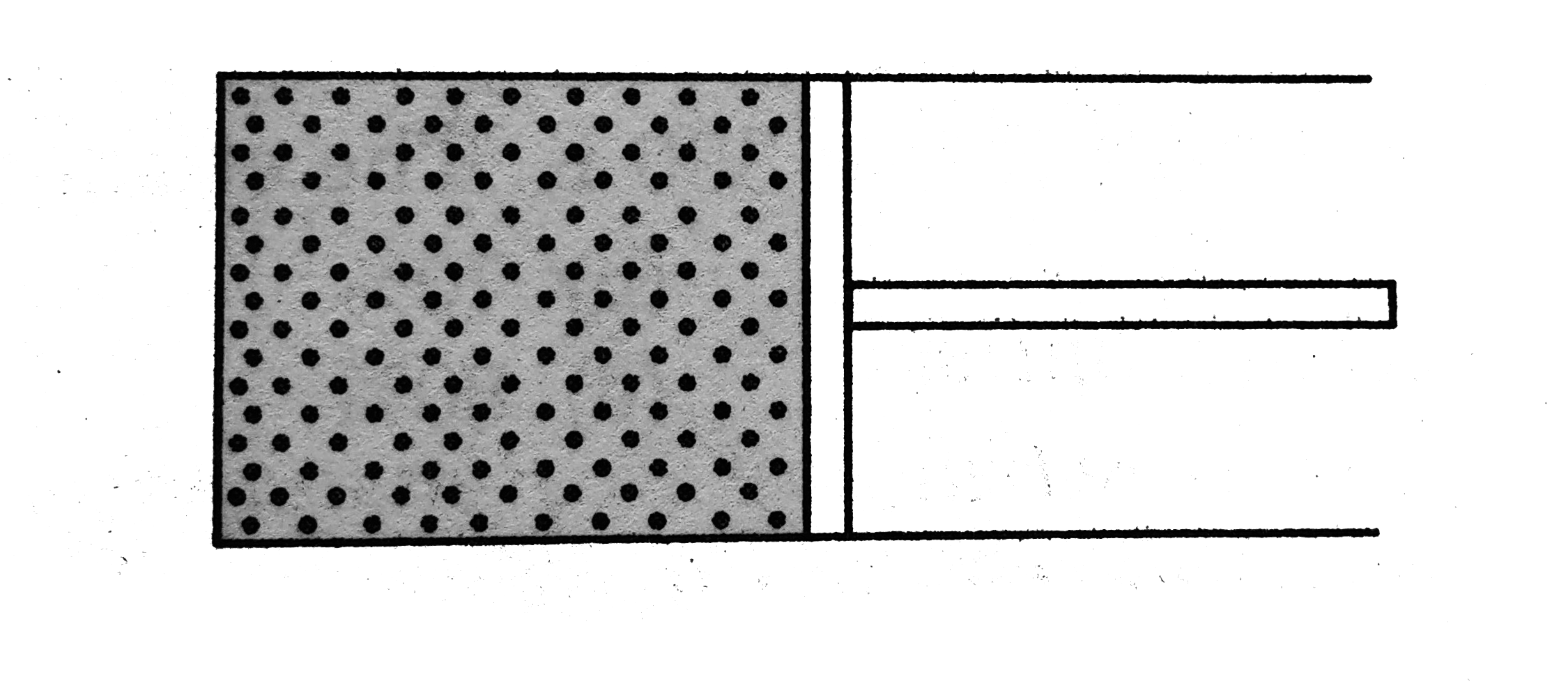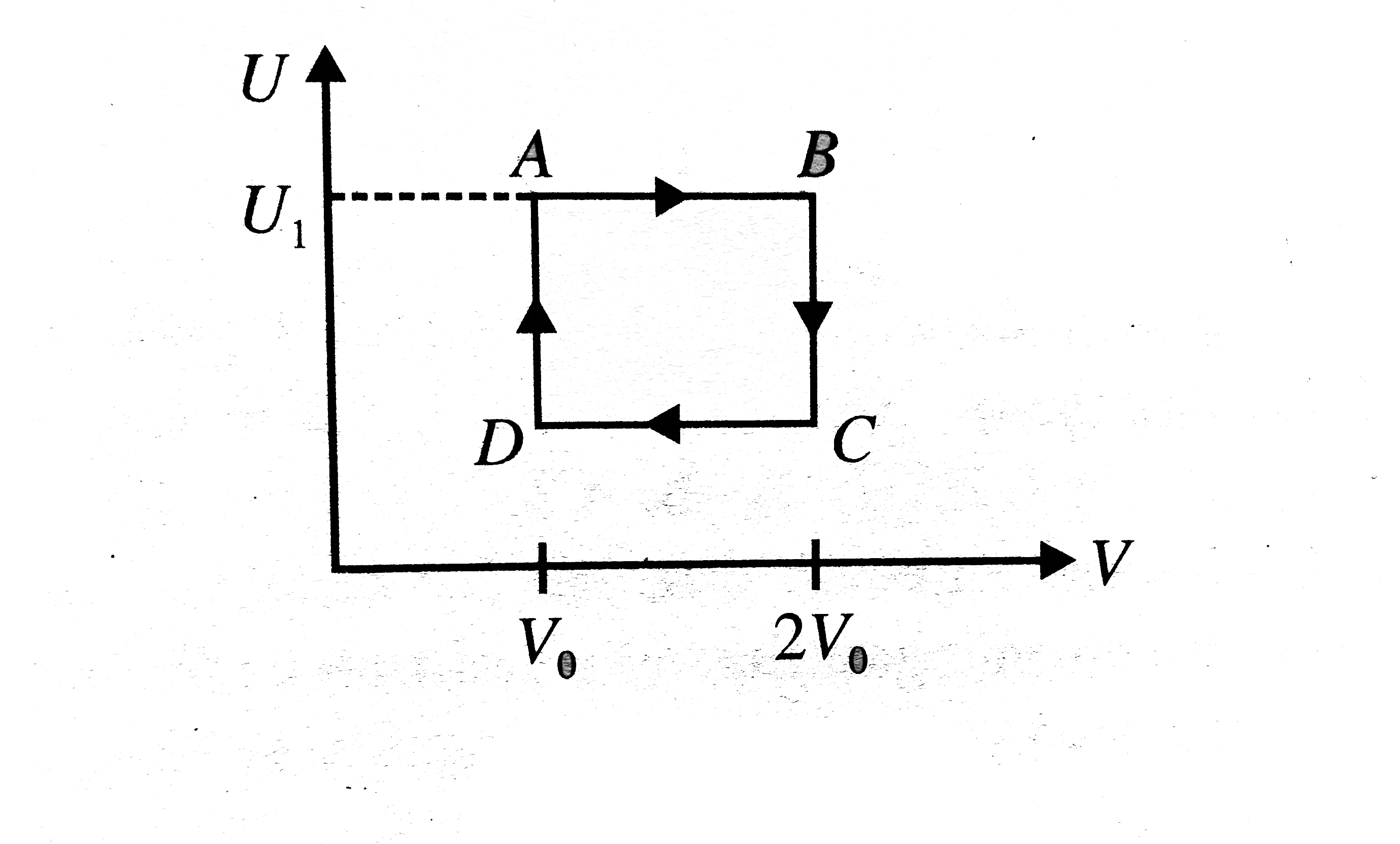The pressure of an ideal gas varies with volume as P= aV, where a is a constant. One mole of the gas is allowed to undergo expansion such that its volume becomes ‘m’ times its initial volume. The work done by the gas in the process is
αV2(m2−1)
α2V22(m2−1)
α2(m2−1)
αV22(m2−1)
The correct Answer is:D
To find the work done by the gas during the expansion, we start with the given relationship between pressure and volume:
1. Identify the relationship: The pressure P of the gas varies with volume V as:
P=aV
where a is a constant.
2. Understand the process: We have one mole of the gas expanding from an initial volume V1 to a final volume V2, where V2=mV1.
3. Set up the work done formula: The work done W by the gas during an expansion is given by the integral:
W=∫V2V1PdV
4. Substitute the pressure function: We substitute the expression for pressure into the work done formula:
W=∫V2V1aVdV
5. Perform the integration: The integral of aV with respect to V is:
W=a∫V2V1VdV=a(V22)V2V1
Evaluating this from V1 to V2:
W=a((mV1)22−V212)
W=a(m2V212−V212)
W=a(V212(m2−1))
6. Express V1 in terms of the ideal gas law: Since we have one mole of gas, we can use the ideal gas law PV=nRT to express V1:
V1=RTP1
where P1 is the initial pressure.
7. Final expression for work done: Substituting V1 back into the work done expression:
W=a(12(RTP1)2(m2−1))
Thus, the work done by the gas during the expansion is:
W=aR2T2(m2−1)2P21
P=aV
where a is a constant.
W=∫V2V1PdV
W=∫V2V1aVdV
W=a∫V2V1VdV=a(V22)V2V1
Evaluating this from V1 to V2:
W=a((mV1)22−V212)
W=a(m2V212−V212)
W=a(V212(m2−1))
V1=RTP1
where P1 is the initial pressure.
W=a(12(RTP1)2(m2−1))
W=aR2T2(m2−1)2P21
Topper's Solved these Questions
- THERMODYNAMICS Book:DISHA PUBLICATIONChapter:THERMODYNAMICS Exercise:EXERCISE-1 : CONCEPT BUILDER (Topic-3 CARNOT ENGINE, REFIGERATOR AND SECOND LAW OF THERMODYNAMICS)
Explore 15 Videos
- THERMODYNAMICS Book:DISHA PUBLICATIONChapter:THERMODYNAMICS Exercise:EXERCISE -2 : CONCEPT APPLICATOR
Explore 29 Videos
- THERMODYNAMICS Book:DISHA PUBLICATIONChapter:THERMODYNAMICS Exercise:EXERCISE-1 : CONCEPT BUILDER (Topic- ZEROTH LOW AND FIRST LAW OF THERMODYNAMICS)
Explore 11 Videos
- THERMAL PROPERTIES OF MATTER Book:DISHA PUBLICATIONChapter:THERMAL PROPERTIES OF MATTER Exercise:Exercise-2 (Concept Applicator)
Explore 28 Videos
- WAVE OPTICSBook:DISHA PUBLICATIONChapter:WAVE OPTICSExercise:EXERCISE-2 : CONCEPT APPLICATOR
Explore 30 Videos
Similar Questions
One mole of an ideal gas whose pressure changes with volume as P=αV , where α is a constant, is expanded so that its volume increase η times. Find the change in internal energy and heat capacity of the gas.
View SolutionThe pressure of a gas is doubled keeping its temperature constant. Find the ratio of the final volume of the gas to its initial volume.
View Solution
Knowledge Check
One mole of an ideal gas expands isothermally to double its volume at 27∘C . The work done by the gas is nearly
A2760calB414calC1380calD600caln moles of a gas are filled in a container at temperature T. If the gas is slowly and isothermally compressed to half its initial volume, the work done by the atmosphere on the gas is
 AnRT2B−nRT2CnRTIn2D−nRTIn2
AnRT2B−nRT2CnRTIn2D−nRTIn25 mole of an ideal gas of volume is expanded against vaccum to make its volume 2 times, then work done by the gas is:
A−RT(V2−V1)B−RTln(V2V1)C0DCv(T2−T1)
The pressure of a gas is doubled keeping its temperature constant. Find the ratio of the final volume of the gas to its initial volume.
View SolutionA gas undergoes a process in which its pressure P and volume V are related as VPn= constant. The bulk modulus of the gas in the process is:
View SolutionAn ideal diatomic gas is expanded so that the amount of heat transferred to the gas is equal to the decrease in its internal energy.
If in the above process, the initial temperature of the gas be T0 and the final volume by 32 times the initial volume, the work done ( in joules ) by the gas during the process will be
View SolutionIf one mole of gas doubles its volume at temperature T isothermally then work done by the gas is
View SolutionOne mole of an ideal gas has an interal energy given by U=U0+2PV , where P is the pressure and V the volume of the gas. U0 is a constant. This gas undergoes the quasi− static cyclic process ABCD as shown in the U−V diagram.

The work done by the ideal gas in the process AB is
View Solution